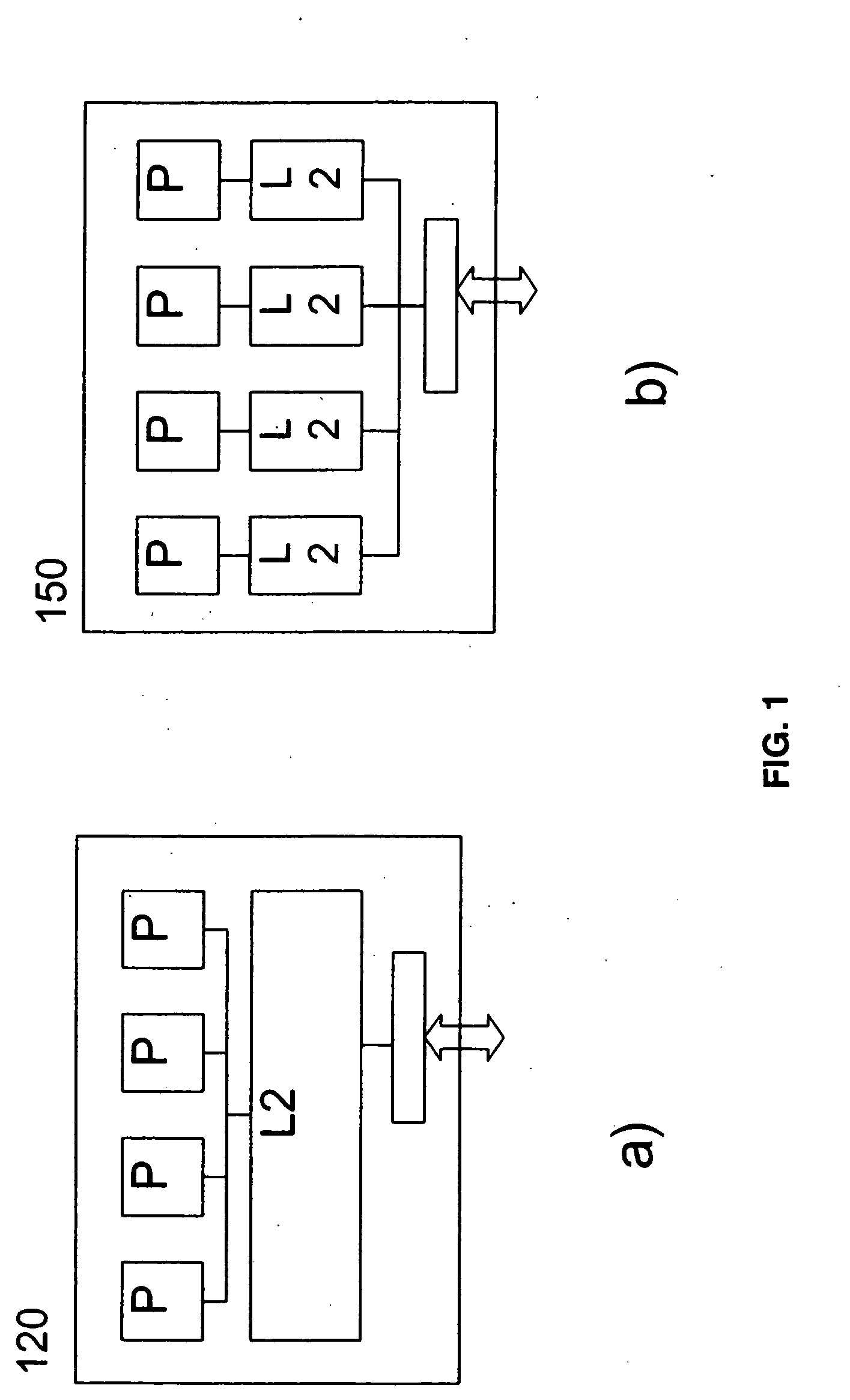Methods and arrangements for reducing latency and snooping cost in non-uniform cache memory architectures
a cache memory and non-uniform technology, applied in memory architecture accessing/allocation, instruments, computing, etc., can solve problems such as non-uniform latency cache architecture, system built out of multi-core nuca chips, and without the necessary optimization, so as to reduce l2/l3 cache memory access latency, reduce snooping requirements and costs, and reduce l2/l3 cache memory bandwidth requirements
- Summary
- Abstract
- Description
- Claims
- Application Information
AI Technical Summary
Benefits of technology
Problems solved by technology
Method used
Image
Examples
Embodiment Construction
[0029] In accordance with at least one presently preferred embodiment of the present invention, there are addressed multi-core non-uniform cache memory architectures (multi-core NUCA), especially Clustered Multi-Processing (CMP) Systems, where a chip comprises multiple processor cores associated with multiple Level Two (L2) caches as shown in FIG. 1. The system built out of such multi-core NUCA chips may also include an off-chip Level Three (L3) cache (and / or memory). Also, it can be assumed that L2 caches have one common global space but are divided in proximity among the different cores in the cluster. In such a system, access to a cache block resident in L2 may be accomplished in a non-uniform access time. Generally, L2 objects will either be near to or far from a given processor core. A search for data in the chip-wide L2 cache therefore may involve a non-deterministic number of hops from core / L2 pairs to reach such data. Hence, L2 and beyond access and communication in the mult...
PUM
 Login to View More
Login to View More Abstract
Description
Claims
Application Information
 Login to View More
Login to View More - R&D
- Intellectual Property
- Life Sciences
- Materials
- Tech Scout
- Unparalleled Data Quality
- Higher Quality Content
- 60% Fewer Hallucinations
Browse by: Latest US Patents, China's latest patents, Technical Efficacy Thesaurus, Application Domain, Technology Topic, Popular Technical Reports.
© 2025 PatSnap. All rights reserved.Legal|Privacy policy|Modern Slavery Act Transparency Statement|Sitemap|About US| Contact US: help@patsnap.com



